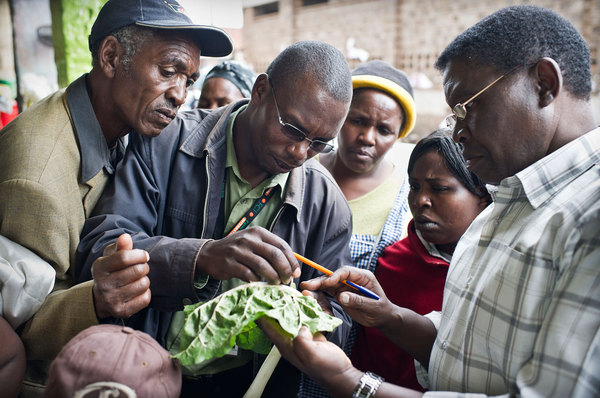Farmers Need Long-Term and Short-Term Solutions to Combat Fall Armyworm in Kenya
Reblogged from Farming First. From a distance, Wycliffe Ngoda’s two acres of shiny green maize crops look healthy and lush. But the tell-tale holes in the leaves and debris on the stems give away an increasingly dangerous secret hidden in more and more maize fields across Kenya and sub-Saharan Africa. The rampant Fall Armyworm caterpillar is…
Why African farmers should balance pesticides with other control methods
By Esther Ndumi Ngumbi. Reblogged from The Conversation. Insect pests cause almost half of the crop losses in Africa. If the continent is to feed its growing population, farmers must find ways to control them. Pests account for high losses in other developing regions too. For smallholder farmers in particular, pest management needs to be affordable, safe…
Fall Armyworm: A new collaboration to disseminate best management practices to farmers
From the 13th to the 15th of November 2017, USAID and CIMMYT held a Regional Training and Awareness Generation Workshop on Fall Armyworm Pest Management for Eastern Africa in Addis Ababa, Ethiopia. Participants from 11 countries attended the workshop to discuss short, medium and long term strategies to control Fall Armyworm in Africa. Following its…
Voices of farmers facing the Fall armyworm
Masindi and Kiryandongo are the maize-growing regions of Uganda, and maize – or corn – is a staple crop, cooked into a porridge for breakfast or into ugali for dinner. The Fall armyworm is threatening maize crops in Uganda – and by extension the food security of Ugandans. It’s expected to damage up to 1.39 million tonnes…
Space-age technology for fight against crop-devastating pest outbreaks
Last night, the Pest Risk Information Service (PRISE), which uses state-of-the-art technology to help inform farmers in sub-Saharan Africa of pest outbreaks, was launched in Zambia at the British High Commission in Lusaka. The service is being developed by a consortium led by CABI and is funded by the UK Space Agency’s International Partnership Programme…
Fall armyworm could cost Africa $2bn+ in lost harvest
Last week, CABI confirmed that since it arrived in Africa in 2016, the Fall Armyworm (FAW) has been reported in 28 African countries, presenting a now permanent agricultural challenge for the continent. FAW mainly affects maize and can cut yields by up to 60%. In research funded by the UK’s Department for International Development (DFID), CABI…
Side event on fall armyworm at AGRF 2017 [livestream]
In 2016 the fall armyworm, a major pest in the Americas, was found in Africa for the first time. Since then it has rapidly spread across much of sub-Saharan Africa. The caterpillar feeds on more than 80 different plants, but maize is its preferred host, the most widely grown crop in Africa and a staple…
The Life Cycle of Fall Armyworm
The Fall armyworm, Spodoptera frugiperda, is a major invasive pest in Africa. It has a voracious appetite and feeds on more than 80 plant species, including maize, rice, sorghum and sugarcane. Another feature which makes it an incredibly successful invasive species is its ability to spread and reproduce quickly. CABI have developed a poster to…
Removal of invasive shrub could be an easy way to help reduce malaria transmission
Removing the flowers of an invasive shrub from mosquito-prone areas might be a simple way to help reduce malaria transmission, according to a new study published in the open access Malaria Journal. Removing the flowers from villages in Mali decreased the local mosquito vector population by nearly 60%. The study, carried out in the Bandiagra…
CABI leads rapid identification of Fall Armyworm
Identifying armyworms usually involves taking the larvae that have caused the damage, waiting for them to develop in to adults and then studying the body and markings of these adults to identify the species collected. This process causes delays to identification, and could therefore delay action for what are some of the most ravaging crop…



